Defying Gravity
Finding Artistic Delight in Microgravity Experimentation
Finding Artistic Delight in Microgravity Experimentation
On May 22nd 2022, I embarked on a zero-g parabolic flight.
As a representative of the Zed Factor Fellowship flying on Aurelia's inaugural Horizon 2022 Mission, the experience was nothing short of a dream come true.
As a representative of the Zed Factor Fellowship flying on Aurelia's inaugural Horizon 2022 Mission, the experience was nothing short of a dream come true.
credit: Zero-G Corp. and Steve Boxall
March 3rd, I got an email from Zed Factor that one of the 2021 Zedis would be chosen to participate in this flight. As soon as I saw this I gasped! Nothing could be more relevant to my ongoing personal and school projects at the time than a zero-g flight. We had to submit 3 essays about why this would be meaningful to us, and how we would engage a community around our projects.
On March 29th, I was jumping up and down with the great news--I was in!
On March 29th, I was jumping up and down with the great news--I was in!
Between school, finals, and my other involvements I brainstormed a list of project ideas that I would submit for approval. I wanted to explore the exciting affordances of product design for zero-g.
I asked myself: what will be the ubiquitous, practical, or just delightful daily objects surrounding humans living and working in microgravity environments? How might we encourage artists and designers to design for space?
My first pass included thinking about a water lamp to leverage the unique fluid properties of zero-g, exploring Virtual Reality possibilities (zero-g's complete 6 degrees of freedom!), or a way to push yourself forward with air by clicking your heels together (doesn't that sound fun?)-- or what about revolutionizing the concept of a stage with 360 floaty theatre?
However, enclosed water was risky... Virtual Reality dizzying for a first-time flyer... Heal-click propulsion complicated in the time I had.
But 3 ideas stood out among the rest, ideas that neatly represented 3 facets of delight.
Star Broom to represent me and dorky artists everywhere; Orbi to represent friendships,
and PSSST™ to represent aspirations.
But 3 ideas stood out among the rest, ideas that neatly represented 3 facets of delight.
Star Broom to represent me and dorky artists everywhere; Orbi to represent friendships,
and PSSST™ to represent aspirations.
Building the Vision
By the time we had narrowed down, finals and senior sendoffs rolled around and knocked
me out for the first weeks of May. Soon enough, I found myself back in my hometown of
San Jose one week before the flight, surrounded by boxes of dorm things, and little built hardware.
The pressure was on!
me out for the first weeks of May. Soon enough, I found myself back in my hometown of
San Jose one week before the flight, surrounded by boxes of dorm things, and little built hardware.
The pressure was on!
1: Orbi
Friendship, Space Futures, & Character Design
Orbi was first conceptualized in my USC Iovine & Young Designing Live Experiences class as a physical and metaverse buddy that guides visitors through my team’s Orb: Orbital Hotel Concept (https://graphicdesignanna.myportfolio.com/orb-orbital-hotel).
The Orb Hotel itself was created out of the question: What if space could be colorful? What if it could feel homey and comfortable yet unique–what if we could elevate the experience of microgravity and Earth viewing through considered design?
The Orb Hotel itself was created out of the question: What if space could be colorful? What if it could feel homey and comfortable yet unique–what if we could elevate the experience of microgravity and Earth viewing through considered design?
As part of the proposed designs together with my high school friend Patricia Huang we created Orbi, (which also stands for Orbital Robotic Buddy Intelligence). It is significant to me as a token of our collaboration, friendship, and vision for the future.
When we think about space, it’s hard to relate to its cold empty vastness. Injecting personality through characters like Orbi I think is another way to have regular people get excited about it, just as Pixar's Wall-E pulled us into a silent robot’s story.
Orbi kicked off my announcement that I'd be part of the flight and led to a fun time frolicking around my front yard with my mom helping me take pictures.
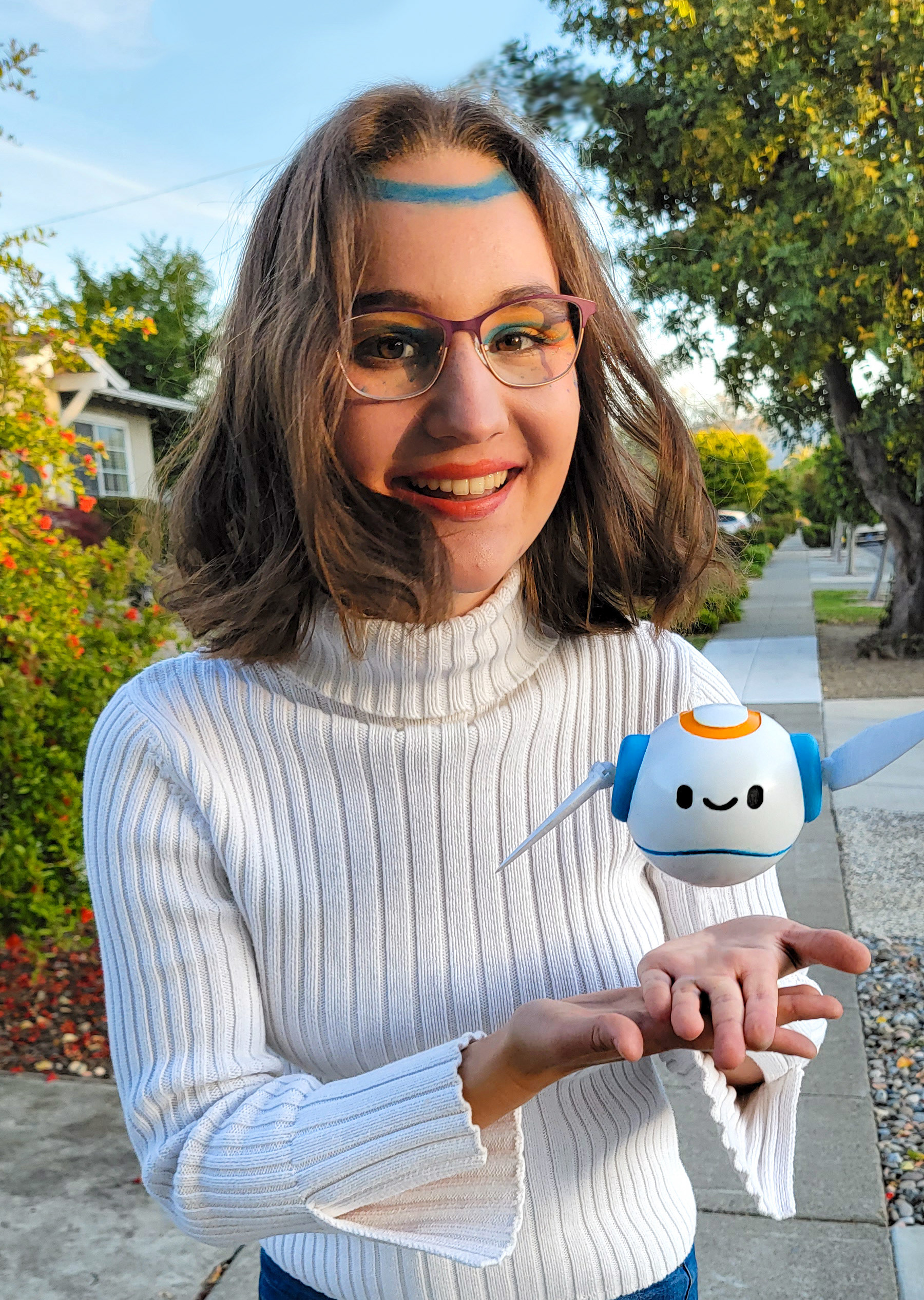
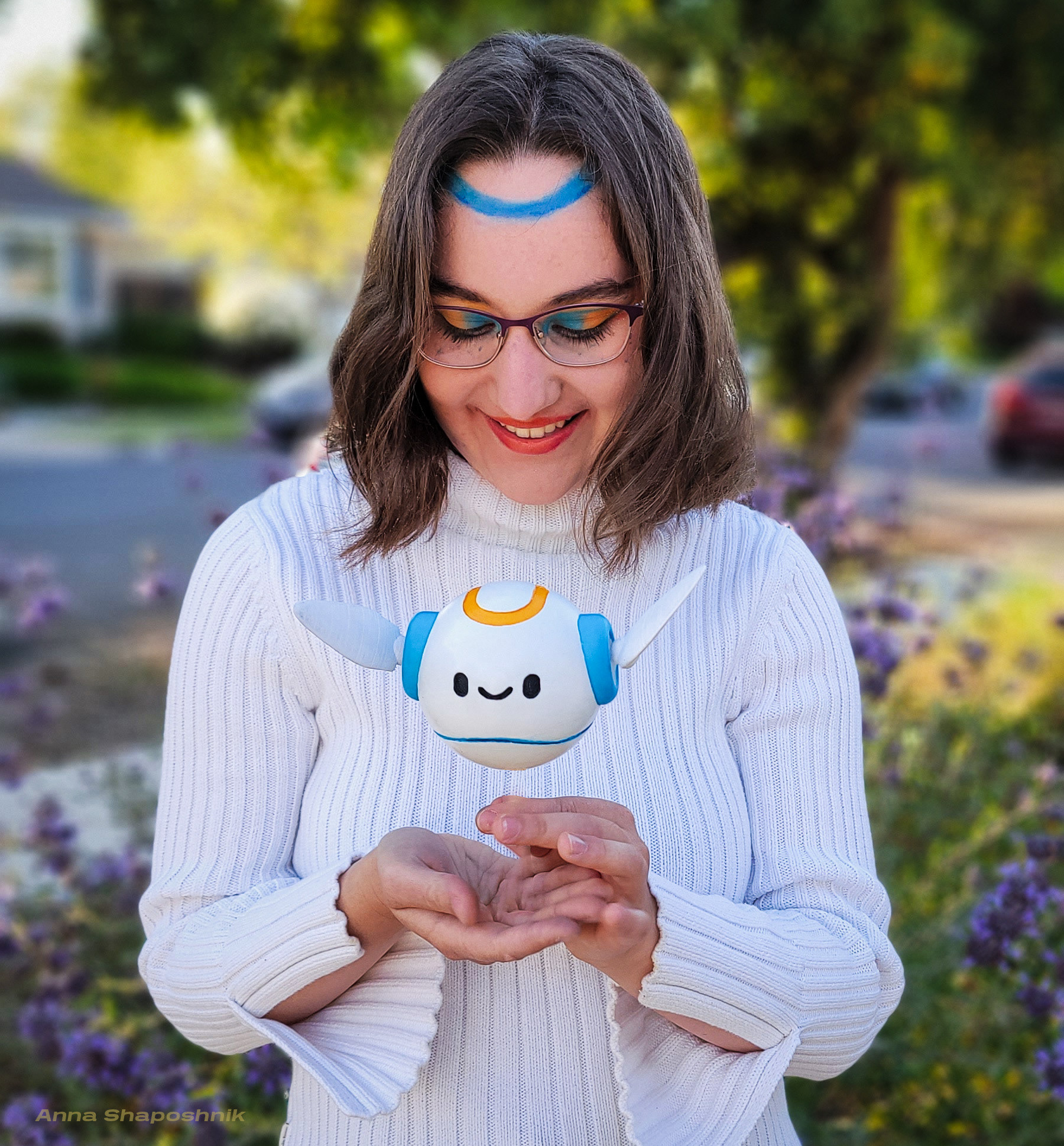

"Welcome to my spaceship... this door has been altered by an infinite improbability drive and will let you out, well, anywhere!--have fun!" ~this one's for the Hitchhiker fans
Orbi Process



Sketch > Computer Aided Design (CAD) 3D Model > Render > 3D Print > Sand > Fill > Paint
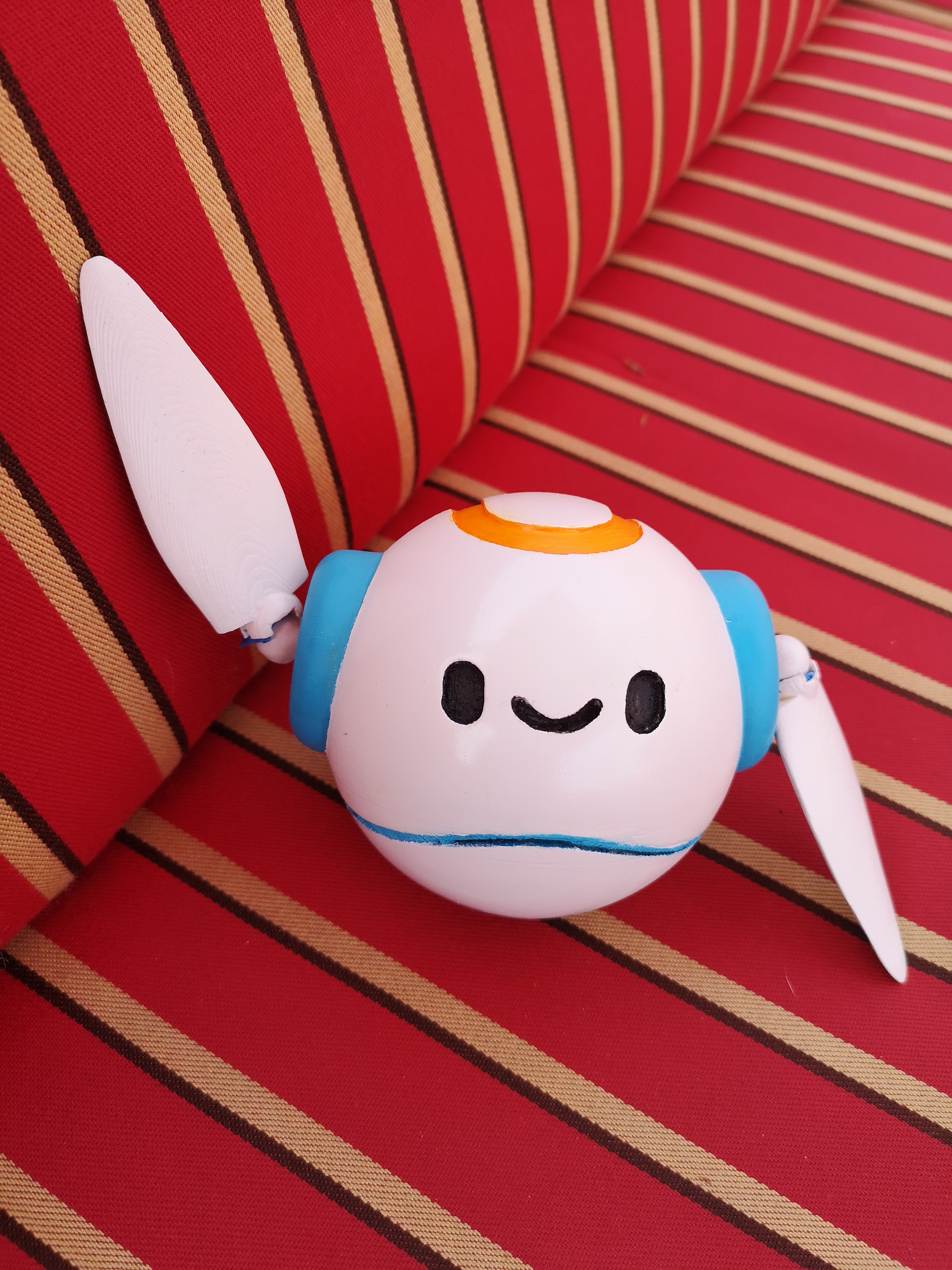
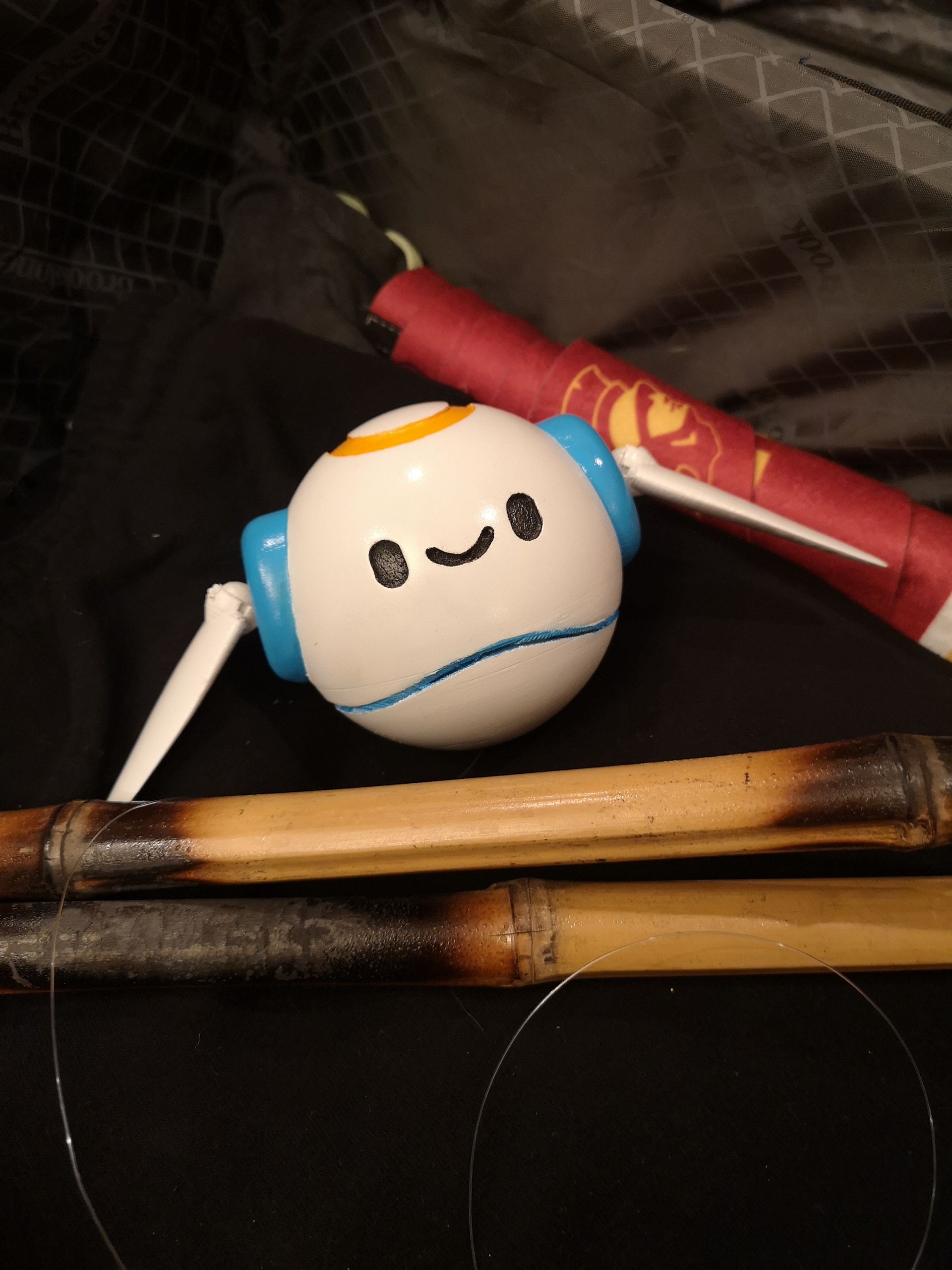

2: Star Broom
Dorky Artist's Childhood Dream Come True
Star Broom came out of the first thing I pictured doing in zero-g, floating around on a broom!
Why not make that come true! ପ૮๑ᵔ ᵕ ᵔ๑ აଓ
Why not make that come true! ପ૮๑ᵔ ᵕ ᵔ๑ აଓ
Every since I was a kid I’ve wanted to fly. I gobbled up stories about people transforming into birds, witches on brooms, and Hermes’ winged feet.
Star Broom felt like a very personal project reflecting my artistic voice, and also one to represent every single fellow geeky artist, character designer, cosplayer, and art nerd out there. Through it, I’m unapologetically myself and hold space for celebrating magical delight. I think it’s a beautiful contrast to see something like this in a highly technical area and I hope it encourages more artists to experiment with the future of fun in microgravity. I picture a future playground of children (and adults!) on an orbital station gleefully floating around with their brooms and locomotion devices just as happily as you might see them down on Earth in a pool or squatting making sandcastles in the sand.

credit: Zero-G Corp. and Steve Boxall
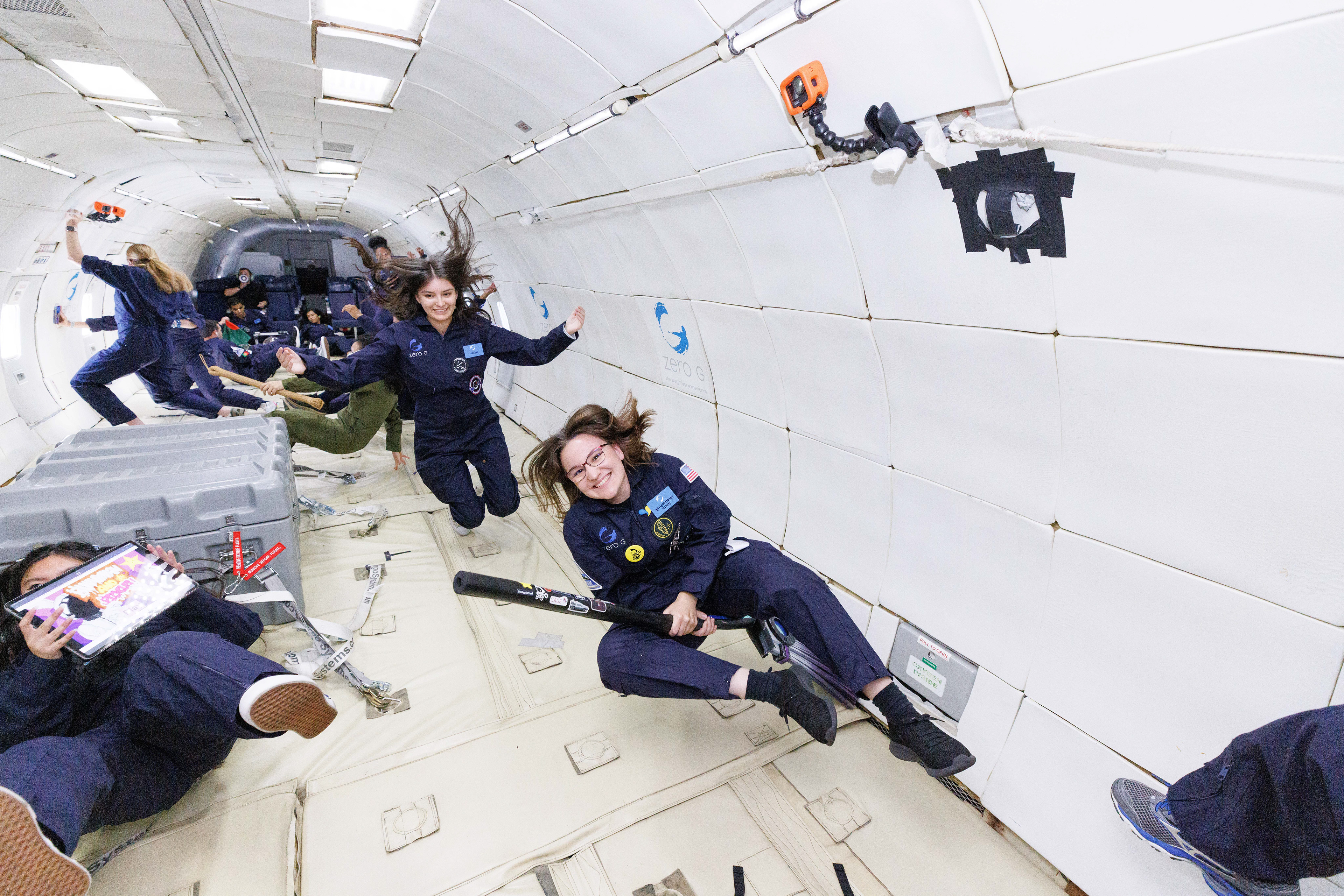
credit: Zero-G Corp. and Steve Boxall
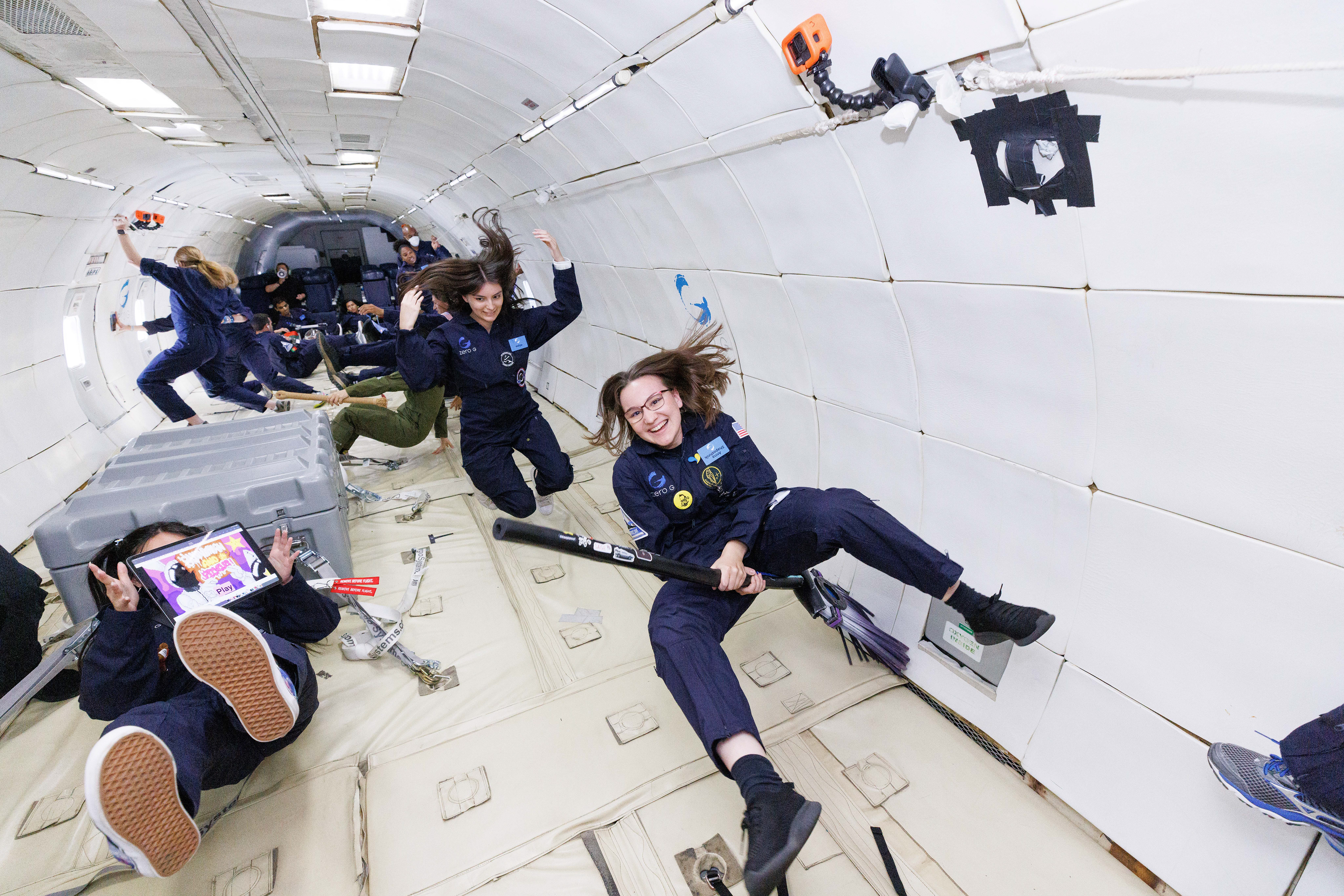
credit: Zero-G Corp. and Steve Boxall
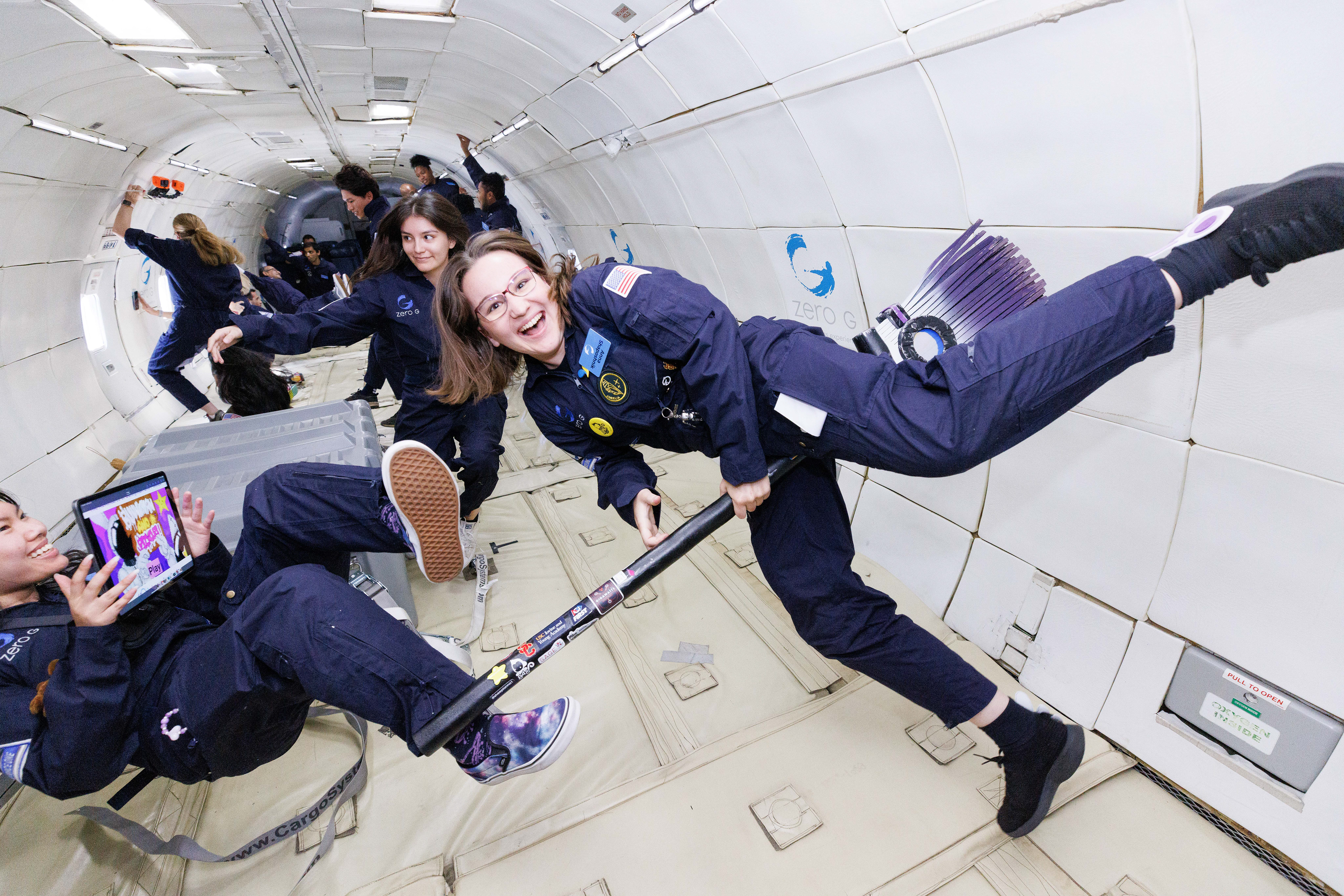
credit: Zero-G Corp. and Steve Boxall

credit: Zero-G Corp. and Steve Boxall
The project included a few practical considerations as well. Safety guidelines on the flight adhere to modified but similar rules as regular commercial flights, and are important for everyone involved. Projects with liquids, flammables, pressurized air, etc. have documentation submitted by the flight integrator on our behalf. Part of the guidelines state there can't be any long rigid items that could poke passengers. As such, I had to make sure the whole thing was covered in foam and the front of the broom had no rigid core so it could give way when rammed into something.
The externals of the broom are all from foam, with foam covering and extending past a rigid bamboo core, with the bristles cut from foam mats. Furthermore, the handle is able to twist out of the bush section and separate into two pieces to pack into a carry-on-sized suitcase. The bristles were made from regular gym foam mats (can be bought on Amazon or at Home Depot), and painstakingly cut with a make-shift jig on a bandsaw at my high school FRC robotics shop. The process I used was informed by this great video on how to make a cosplay broom.
Some things I would improve with my process if I had more time would be to buy the smooth EVA foam he recommends instead of the one I ended up getting at Home Depot and to make sure I had some flat scrap wood as the bottom of the jig instead of cutting directly on the bandsaw table, I would get a bit of tear out at the bottom of my cut which formed burrs on the foam I had to spend lots of time sanding afterward.
Overall the process for making the broom was very instinctual (based on past experience making props for Live Action Roleplaying and cosplay) but also constrained by the requirements. The foam safety constraint gives the broom a thick cartoony look that helps it stand out as a soft object amidst hard surfaces and gives it a larger-than-life appearance. The design itself with the large circular detail was made to echo my design language of circles and half circles on the Orbi robot model and connect to the curved edge Star shape that has represented me since my “The Spaces I’ll Fill” animation.
The shiny paints and holo vinyl were chosen to look interesting in motion from different orientations in zero-g.
The externals of the broom are all from foam, with foam covering and extending past a rigid bamboo core, with the bristles cut from foam mats. Furthermore, the handle is able to twist out of the bush section and separate into two pieces to pack into a carry-on-sized suitcase. The bristles were made from regular gym foam mats (can be bought on Amazon or at Home Depot), and painstakingly cut with a make-shift jig on a bandsaw at my high school FRC robotics shop. The process I used was informed by this great video on how to make a cosplay broom.
Some things I would improve with my process if I had more time would be to buy the smooth EVA foam he recommends instead of the one I ended up getting at Home Depot and to make sure I had some flat scrap wood as the bottom of the jig instead of cutting directly on the bandsaw table, I would get a bit of tear out at the bottom of my cut which formed burrs on the foam I had to spend lots of time sanding afterward.
Overall the process for making the broom was very instinctual (based on past experience making props for Live Action Roleplaying and cosplay) but also constrained by the requirements. The foam safety constraint gives the broom a thick cartoony look that helps it stand out as a soft object amidst hard surfaces and gives it a larger-than-life appearance. The design itself with the large circular detail was made to echo my design language of circles and half circles on the Orbi robot model and connect to the curved edge Star shape that has represented me since my “The Spaces I’ll Fill” animation.
The shiny paints and holo vinyl were chosen to look interesting in motion from different orientations in zero-g.
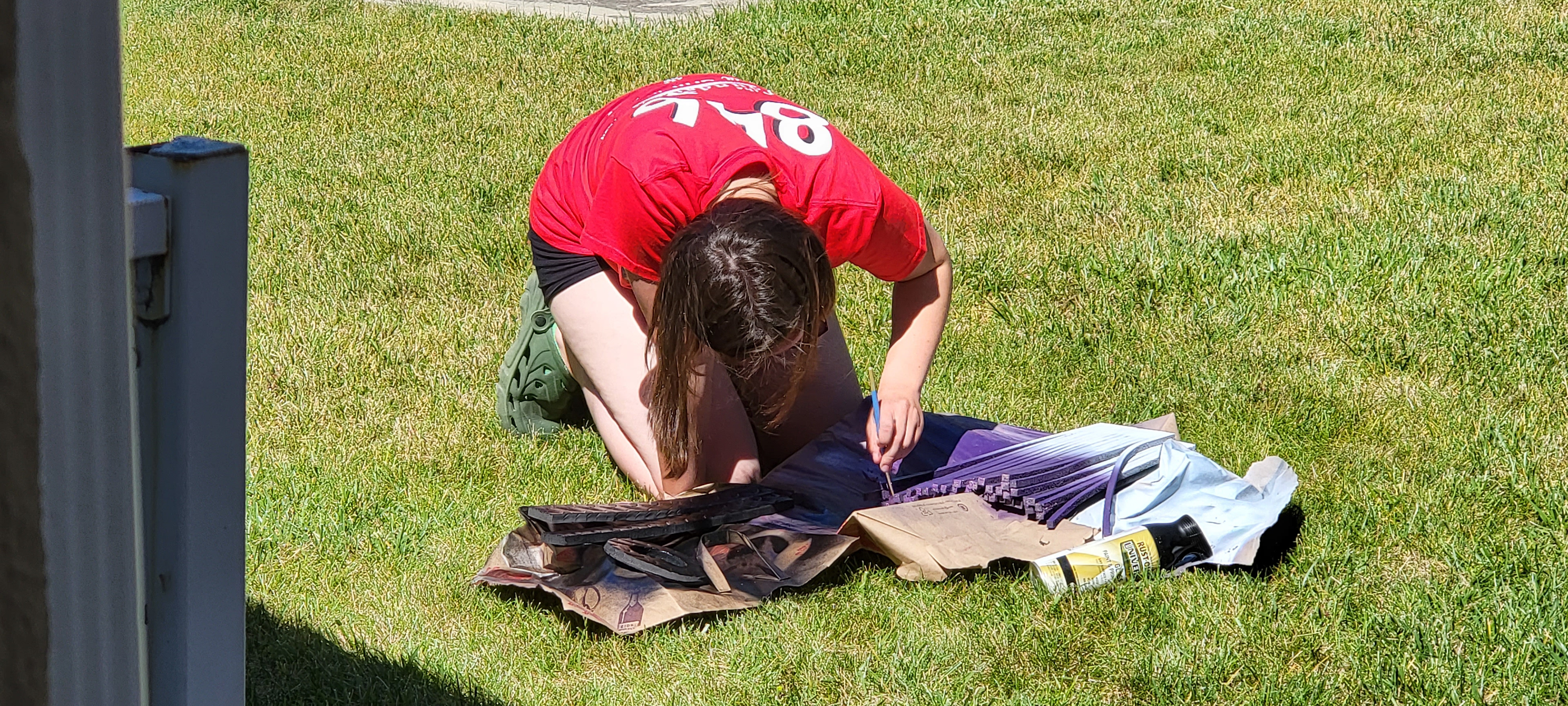
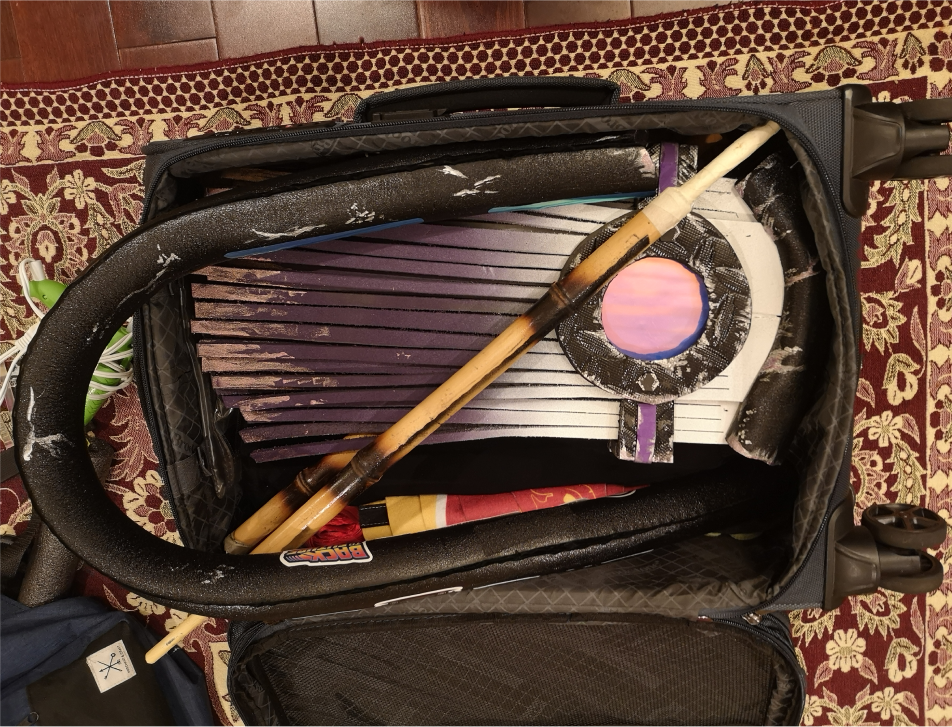
While making the project, I had the doubt creep in that it was not going to be worthy among advanced technical projects.
I remember looking up from my broom project and saying
My doubts were unfounded and in the end, I was so excited to see the diverse range of all the projects brought on the flight. This flight is all about storytelling and this piece is a culmination of where I’ve gotten through the support of all the teams and organizations whose logos grace the front of the broom. Symbolically, it feels as though their support is the force that makes me weightless in that moment and free to follow my dreams. I’m very thankful to Aurelia, Zed Factor, the USC Iovine and Young Academy, SAGE, FIRST Robotics Team 846: The Funky Monkeys, Lynbrook High School, the mad scientist drive of Doc Brown from Back to the Future (another hidden detail in the broom’s core), my favorite WebToon Space Boy, Adam Savage and the maker community, the star from my first 2D animation where I eerily predict my entry to the space industry (despite not expecting that at all--I guess you could say art begets life :P) and all the other inspirations that led me here.
As a final touch, I made some foam wings for my shoes as a call back to the Hermes mythology of flight. :)
I remember looking up from my broom project and saying
“Aaa everyone’s projects are going to be so cool and I’m just bringing a broom,
It will fly and I will fly on it, that’s it."
And me and my mom shared a long laugh. The joyful absurdity of being able to say that at all!
Of course I would actually build the first childhood wish that came to mind.
Of course I would actually build the first childhood wish that came to mind.
My doubts were unfounded and in the end, I was so excited to see the diverse range of all the projects brought on the flight. This flight is all about storytelling and this piece is a culmination of where I’ve gotten through the support of all the teams and organizations whose logos grace the front of the broom. Symbolically, it feels as though their support is the force that makes me weightless in that moment and free to follow my dreams. I’m very thankful to Aurelia, Zed Factor, the USC Iovine and Young Academy, SAGE, FIRST Robotics Team 846: The Funky Monkeys, Lynbrook High School, the mad scientist drive of Doc Brown from Back to the Future (another hidden detail in the broom’s core), my favorite WebToon Space Boy, Adam Savage and the maker community, the star from my first 2D animation where I eerily predict my entry to the space industry (despite not expecting that at all--I guess you could say art begets life :P) and all the other inspirations that led me here.
Fellow dreamers, geeky artists, cosplayers, fantasy fans, webtoon-readers, and anime nerds, this one's for you! Reach for the stars, the space community needs your energy. ✨
Your voice is in you, it’s in your story, it’s in what makes you happy! When you are given a great opportunity I think it’s important to do things for yourself too, because that shows it ok for others to also use their unique voice.
I'm so grateful that when I presented my trip to the rest of the Zed Factor Fellows I was met with support and excitement and other technical+artistic people sharing they felt inspired to get back into or try new things with their art!
Your voice is in you, it’s in your story, it’s in what makes you happy! When you are given a great opportunity I think it’s important to do things for yourself too, because that shows it ok for others to also use their unique voice.
I'm so grateful that when I presented my trip to the rest of the Zed Factor Fellows I was met with support and excitement and other technical+artistic people sharing they felt inspired to get back into or try new things with their art!
As a final touch, I made some foam wings for my shoes as a call back to the Hermes mythology of flight. :)


3: PSSST™
Personal Sustainable Spray System Technology - Aspirations for Product Design in Space
PSSST™ (a satire on aerospace acronym naming :P) is a hand-held locomotion device that aims to make traveling from point A to point B in zero-g an exhilarating experience and was inspired by underwater scooter toys.
The project was born out of talking to USC's resident astronaut Garett Reisman. I asked him what the most fun thing to do in zero-g was and he replied that it was simply the process of getting your body from one place to another.
Underwater scooters are a very close product comparison on all fronts (technology, design, business case). I looked at them because underwater travel is a near comparison for zero-g (such as in NASA’s Neutral Buoyancy Lab). I envisioned an easy, fun way for particularly little kids to be able to freely fly through future space stations and race each other without having to rely on pushing off of the walls. In the future, I see long zero-g tunnels or zero-g play parks existing as part of the human living architecture. Imagine float-bouncing down a cascading moon gravity staircase that lights up with every step and boosting your way back to a higher level to continue playing. Or zooming from one city to the next in a zero-g tunnel between ring worlds.
I began by researching the different underwater scooter toys on Earth and the market segmentation. I found that it was mostly divided by Type (Above the water, Below the water, Hands-free, Hand-held), Activity (Recreation, Science/Research/Professional, Military), Run Time, and Region.
My first main consideration was how the user would hold the device. Would they use their hands stretched in front of them? Would they have the device attached to their feet? (which as opposed to hands, are extra useless in zero-g) What would feel more fun? What would be easier to control?
In the end, while I thought that having something attached to the feet would be more practical to free up the hands, it could be harder to control or attach/detach. I did enjoy and toy with the idea of having "Ruby Slippers" where you could click your heels together and fly up (which I may explore again)
The project was born out of talking to USC's resident astronaut Garett Reisman. I asked him what the most fun thing to do in zero-g was and he replied that it was simply the process of getting your body from one place to another.
Underwater scooters are a very close product comparison on all fronts (technology, design, business case). I looked at them because underwater travel is a near comparison for zero-g (such as in NASA’s Neutral Buoyancy Lab). I envisioned an easy, fun way for particularly little kids to be able to freely fly through future space stations and race each other without having to rely on pushing off of the walls. In the future, I see long zero-g tunnels or zero-g play parks existing as part of the human living architecture. Imagine float-bouncing down a cascading moon gravity staircase that lights up with every step and boosting your way back to a higher level to continue playing. Or zooming from one city to the next in a zero-g tunnel between ring worlds.
I began by researching the different underwater scooter toys on Earth and the market segmentation. I found that it was mostly divided by Type (Above the water, Below the water, Hands-free, Hand-held), Activity (Recreation, Science/Research/Professional, Military), Run Time, and Region.
My first main consideration was how the user would hold the device. Would they use their hands stretched in front of them? Would they have the device attached to their feet? (which as opposed to hands, are extra useless in zero-g) What would feel more fun? What would be easier to control?
In the end, while I thought that having something attached to the feet would be more practical to free up the hands, it could be harder to control or attach/detach. I did enjoy and toy with the idea of having "Ruby Slippers" where you could click your heels together and fly up (which I may explore again)
PSSST™ is envisioned as one of many simple products that could help make those spaces more enjoyable. One component of PSSST™ is “Sustainable.” Like my other projects, I wanted to use cheaply available and safe items. Originally I wanted the gas canisters to be empty bottles of spray paint or dusters that can be repurposed by drilling a hole, welding on an inlet, and thus becoming re-fillable with plain air. For my prototype, I ended up using a COTS (off-the-shelf part) to easily meet the safety requirements of the Technical Readiness Review, but the concept still remains, as the cans are able to be repressurized to a specific pressure by a small hand pump in between uses.
Cardboard Prototype > first CAD Pass > 3D printed prototype > second and third CAD/3D Printing passes
Although I only had a week, I built in fail-fast iteration into the process. I played around with cardboard and sketches to find out how I wanted the canisters to be positioned relative to the user's hands. I quickly created a preliminary CAD model of half of the device to throw on the 3D printer and noticed that I would need to use a stronger material for the hinged piece, as the 3D printed version was flexing and not able to depress the spray tip.
This led me to use some acrylic sheets my friend from school had left me and gave the added aesthetic bonus of having a see-through top layer. Another fun surprise was discovering that my green filament is heat sensitive and changes yellow when touched! I didn't have access to a laser cutter (which would have definitely been preferred for a smooth cut) so instead, I used my robotics team's bandsaw and a bit of janky super gluing.
This led me to use some acrylic sheets my friend from school had left me and gave the added aesthetic bonus of having a see-through top layer. Another fun surprise was discovering that my green filament is heat sensitive and changes yellow when touched! I didn't have access to a laser cutter (which would have definitely been preferred for a smooth cut) so instead, I used my robotics team's bandsaw and a bit of janky super gluing.
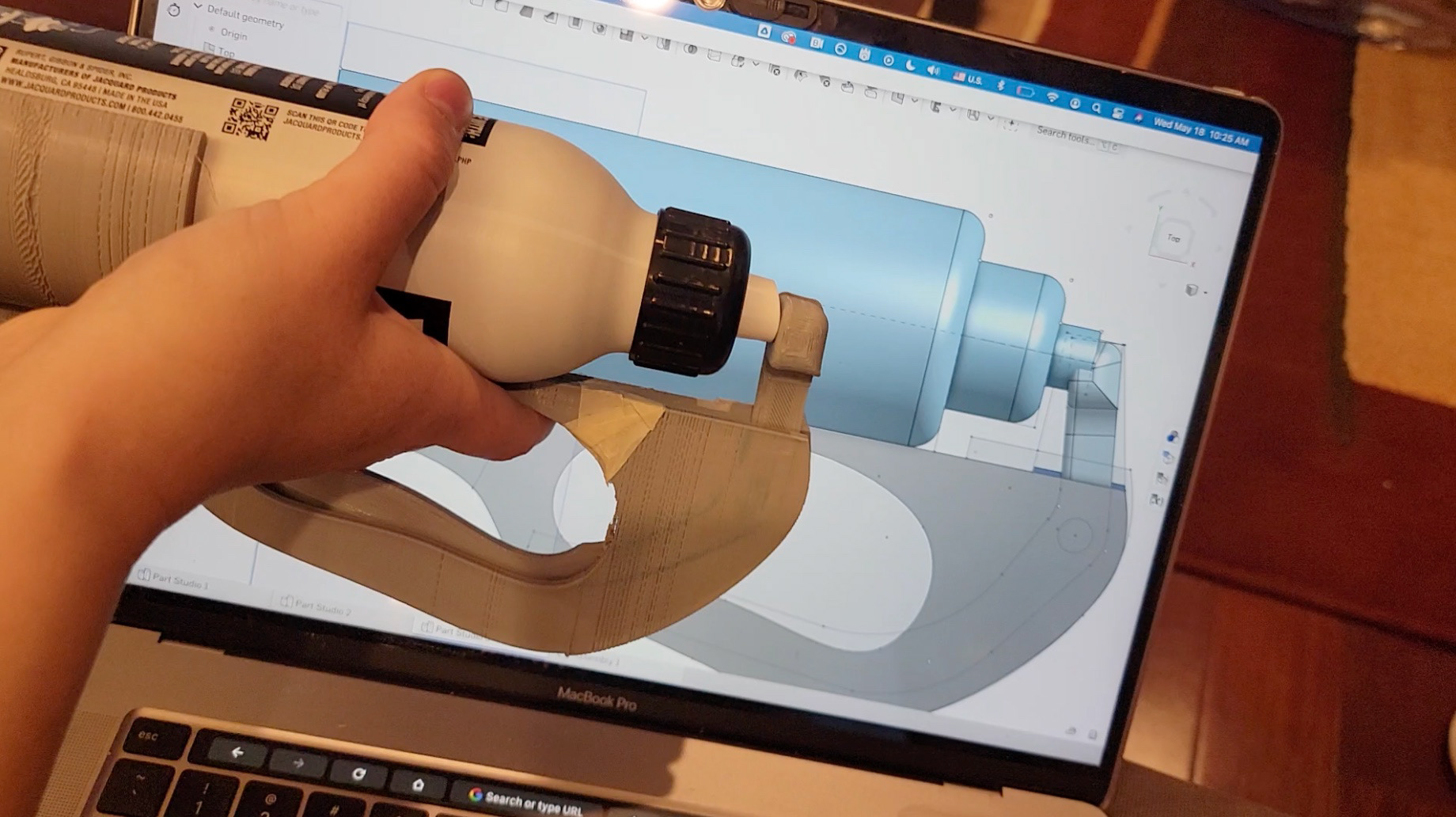
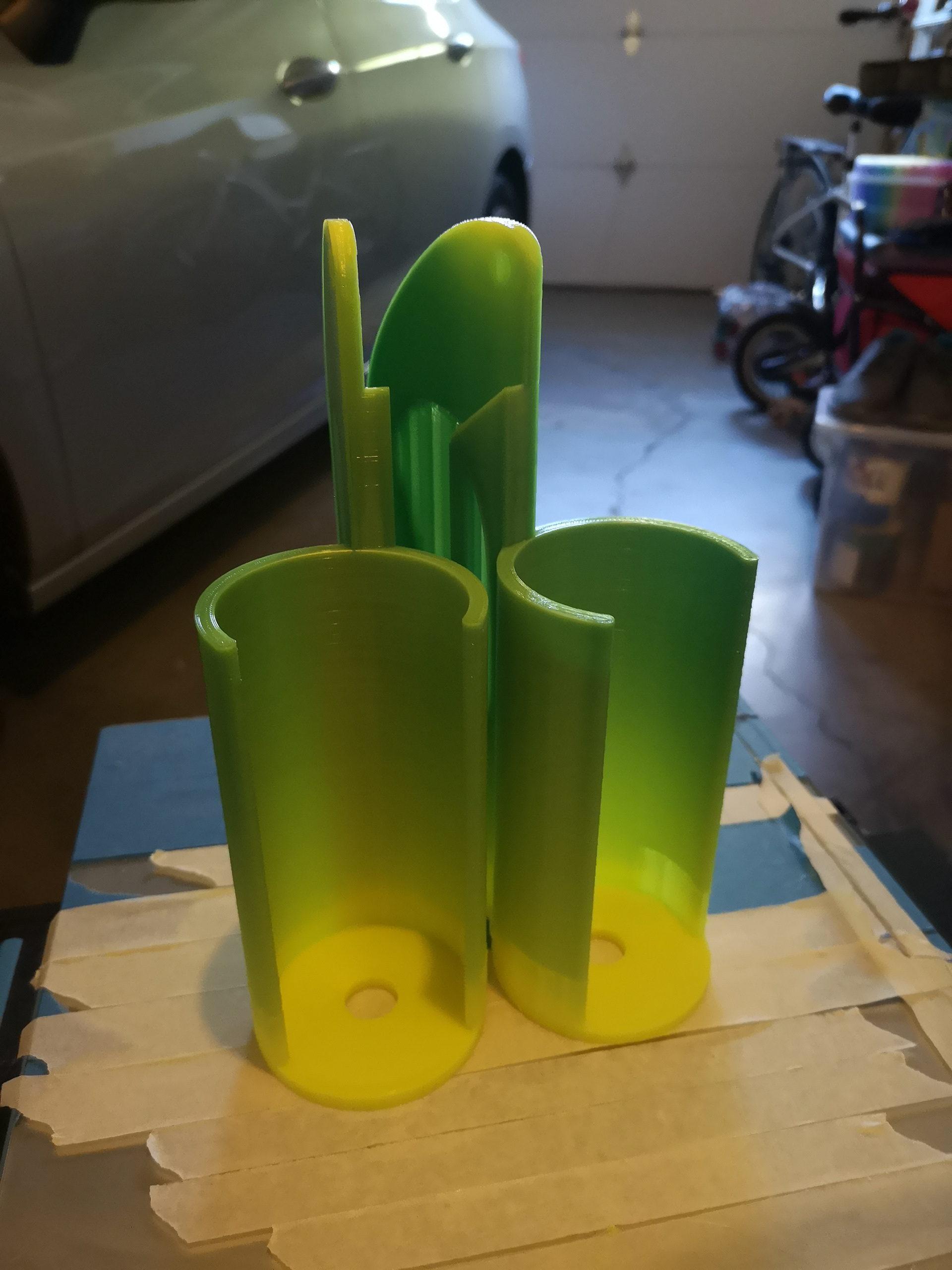
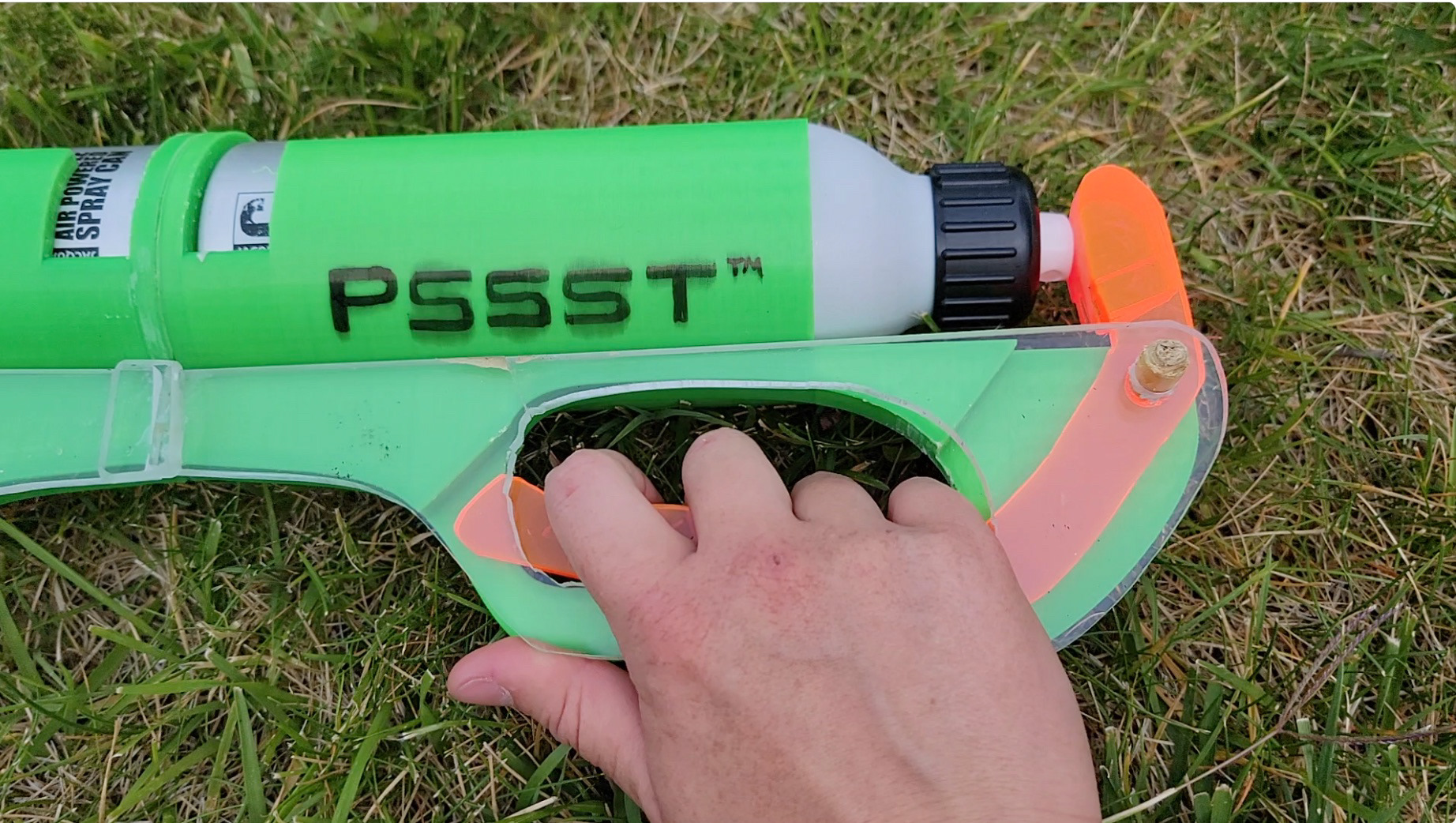
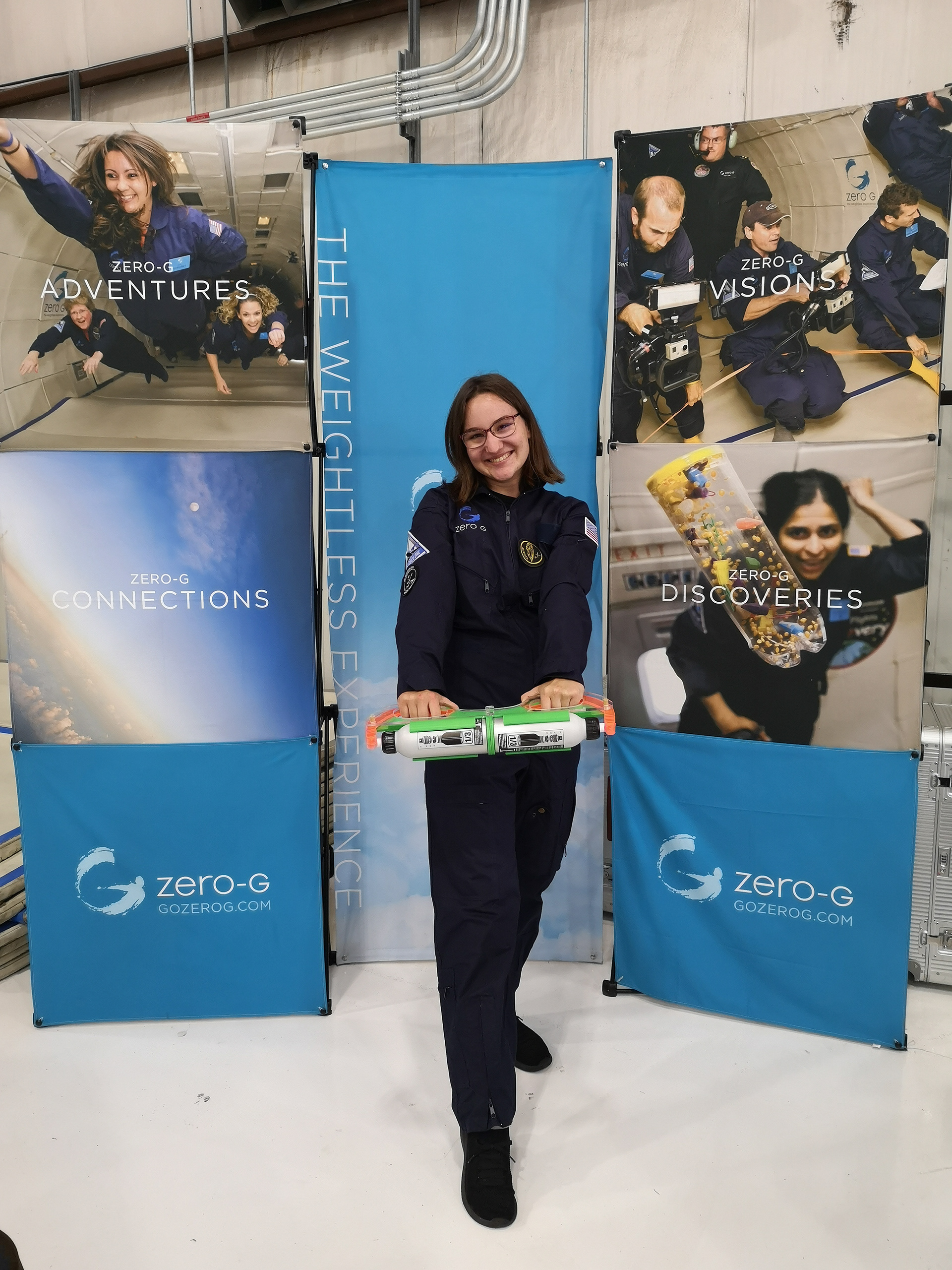

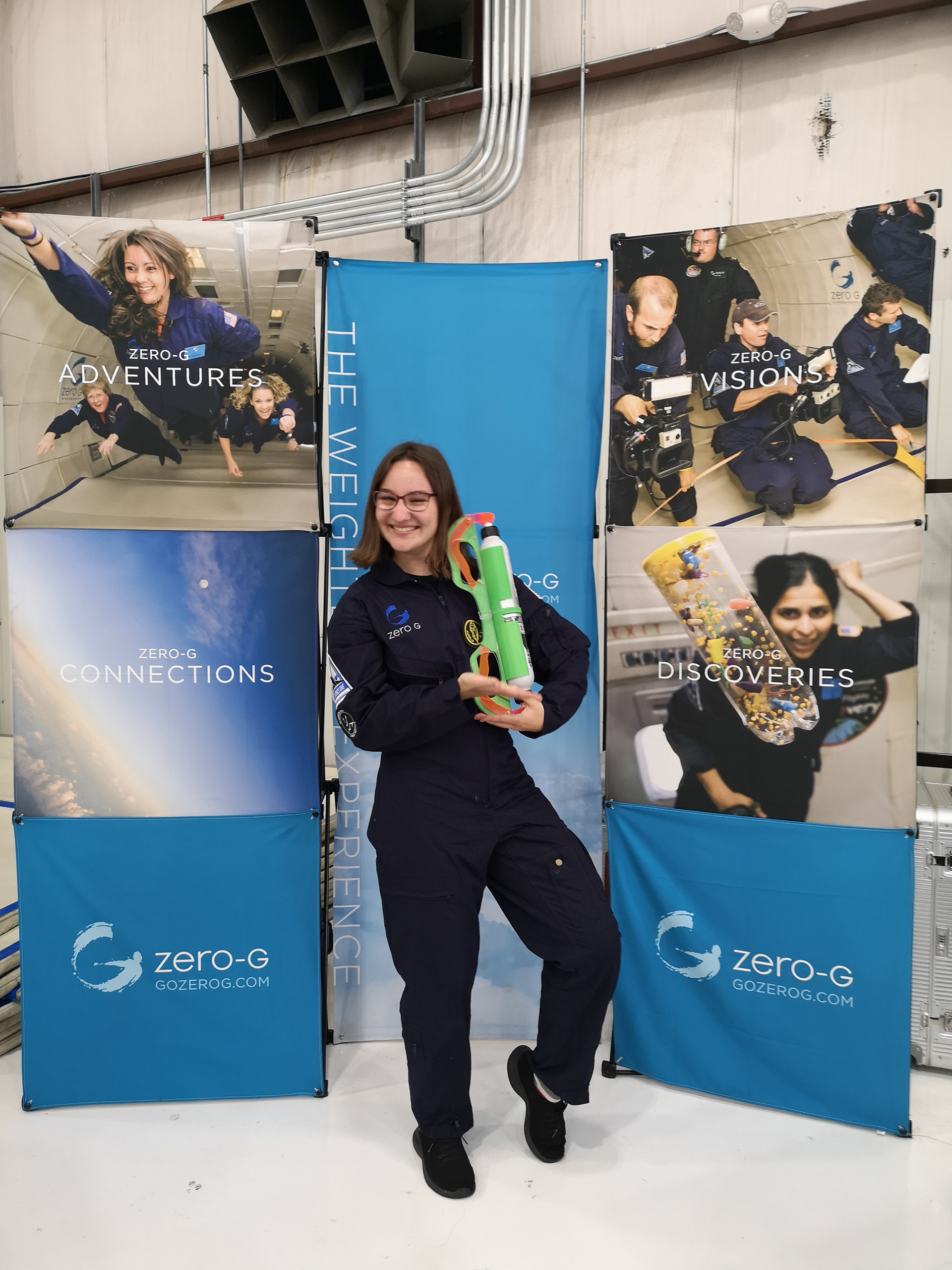
Me and fellow USC Trojan (PhD Student) José Ferreira
The assembly and disassembly process
The Trip
The Trip began in Boston, Massachusetts at the MIT Media Lab. We took a bus to Peake, NH where the flight was happening. Day 1 was our Technical Readiness Review, and Day 2 was our actual flight!
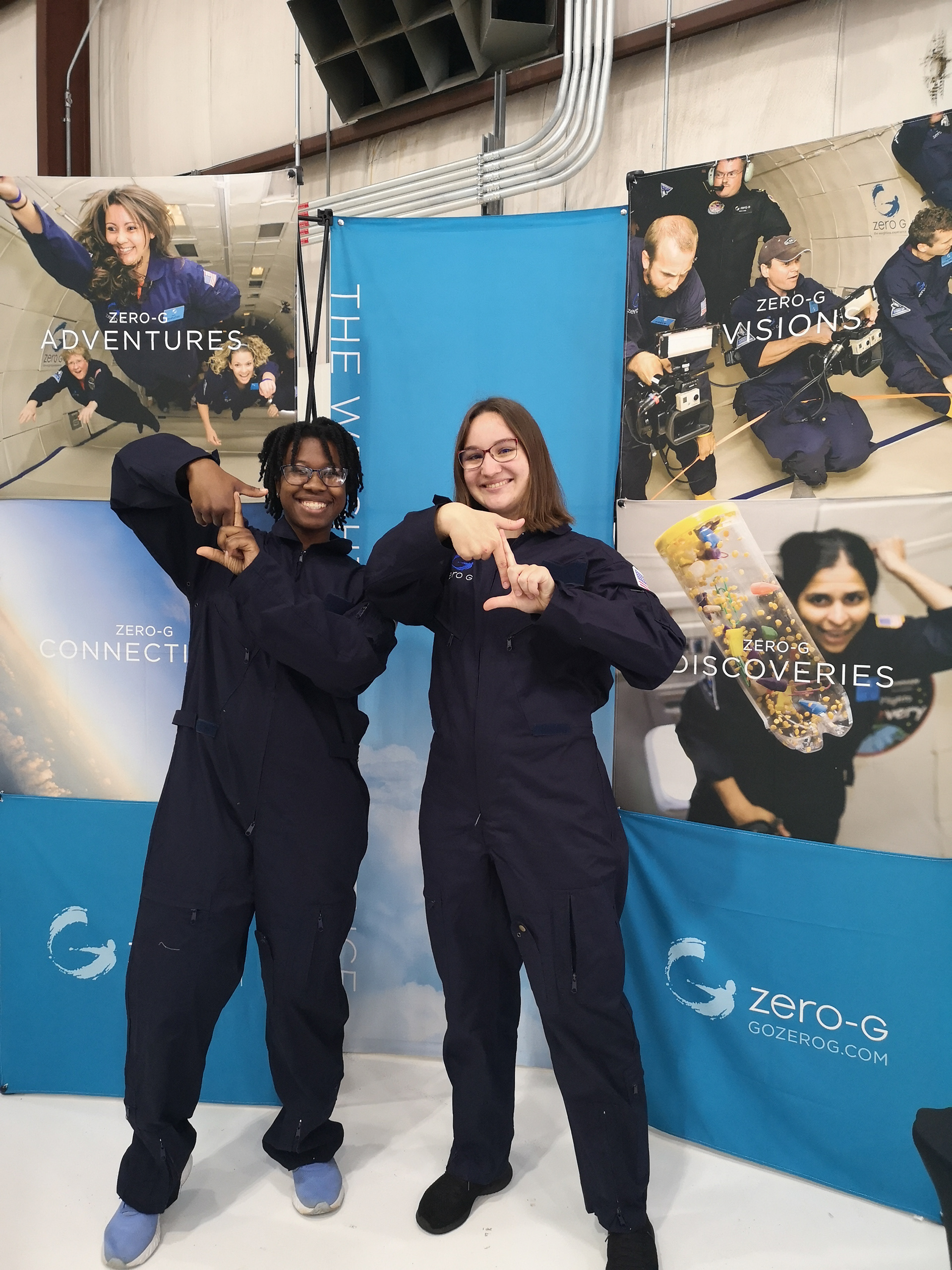
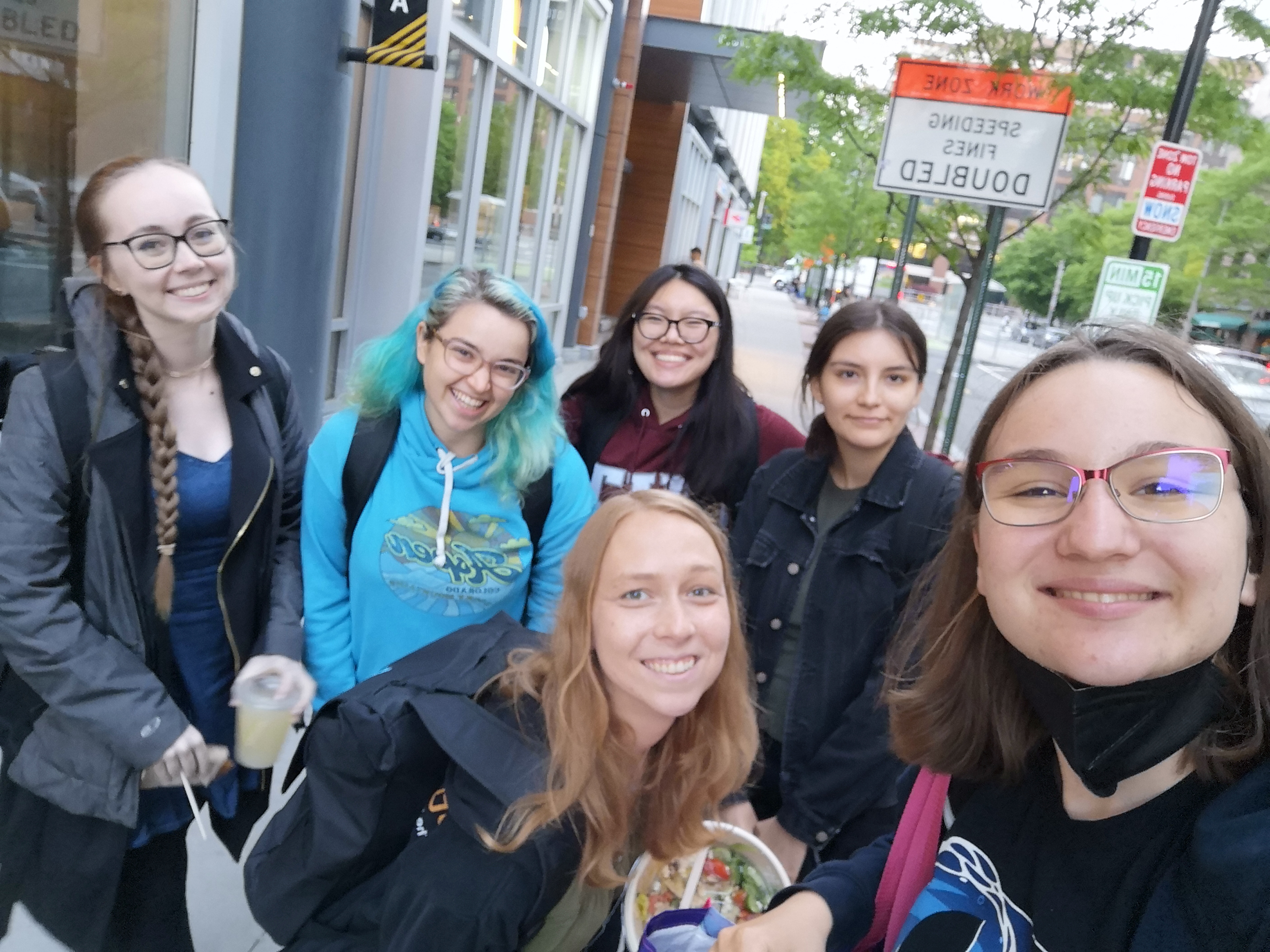
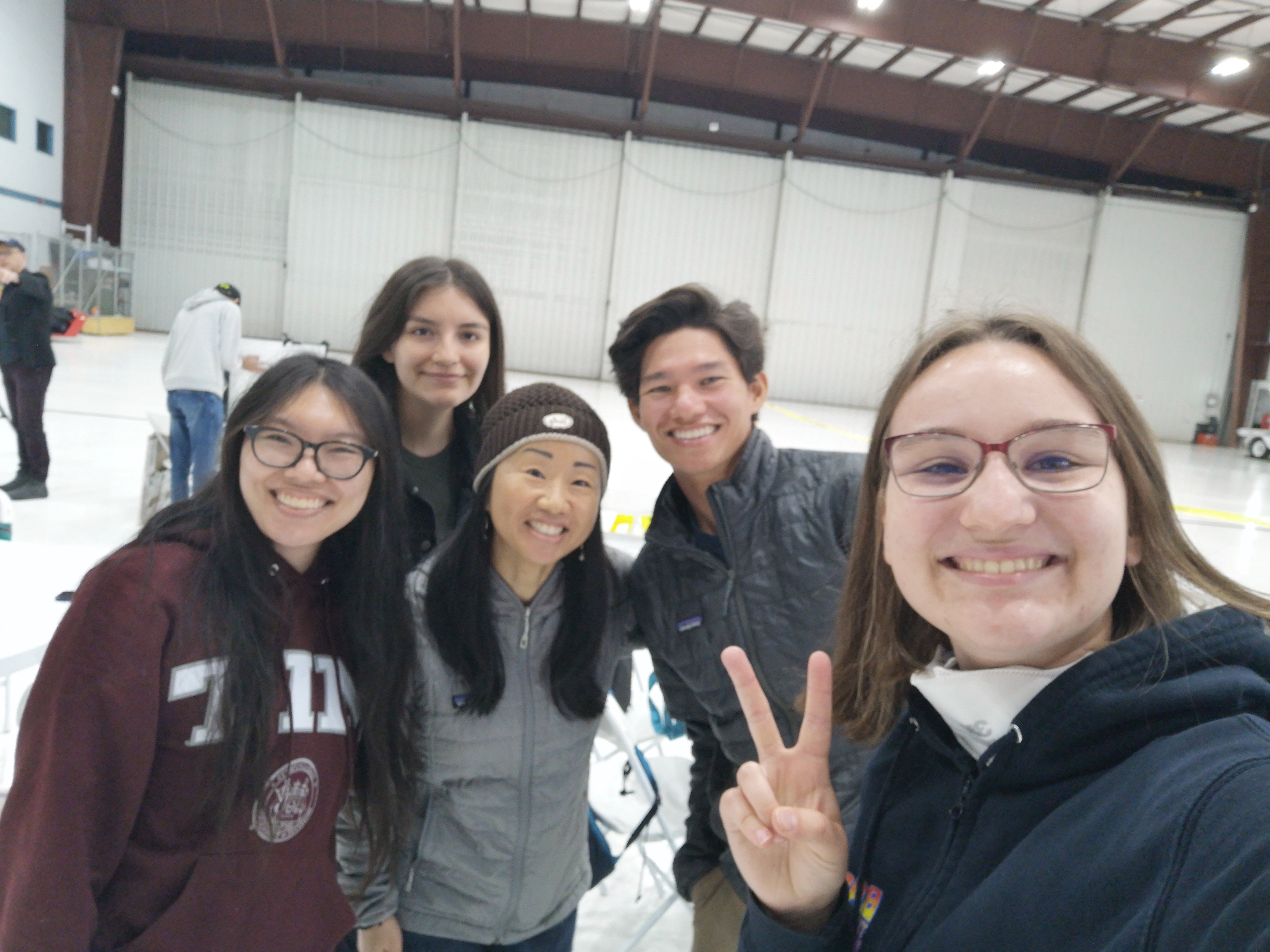
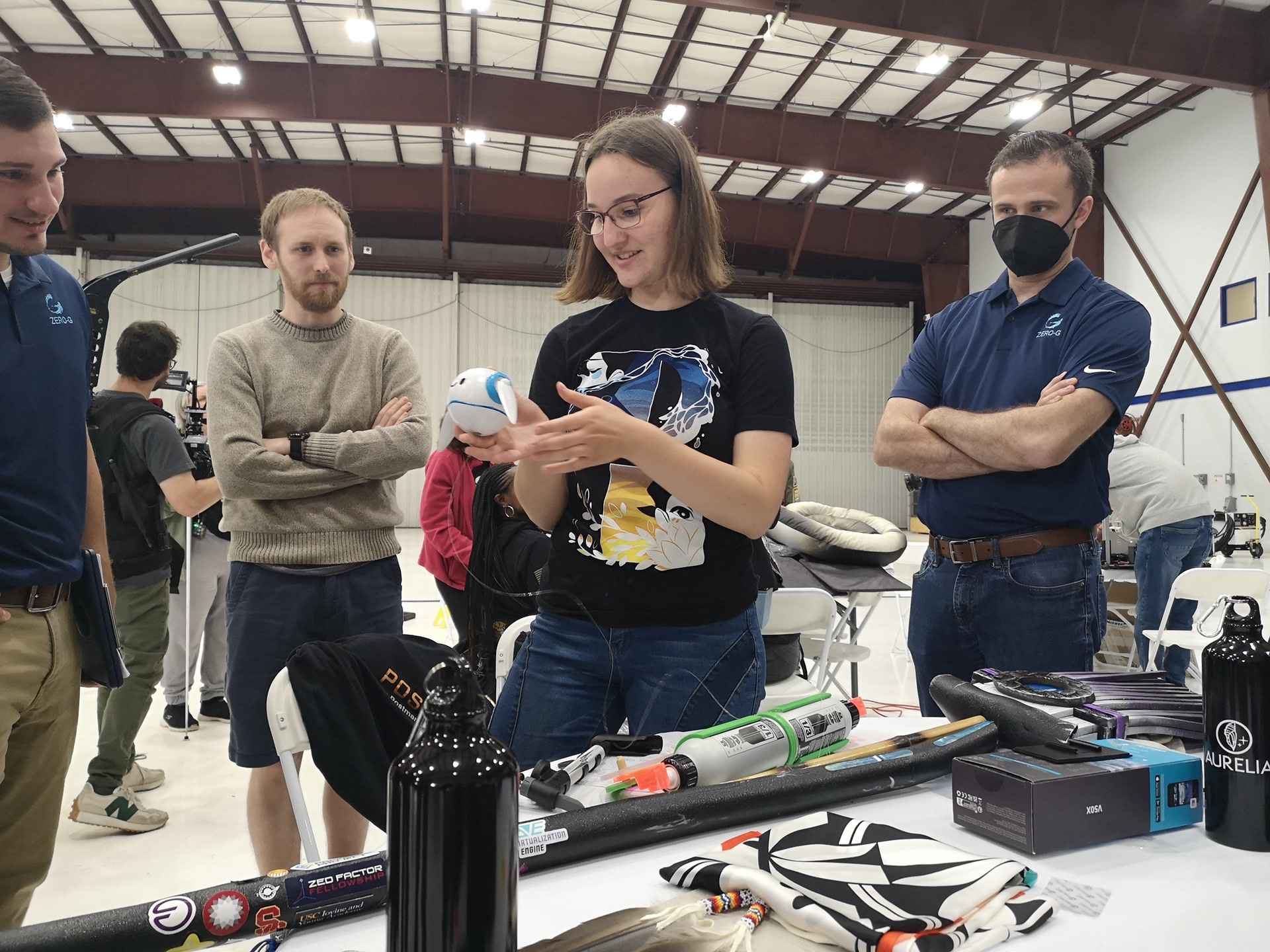
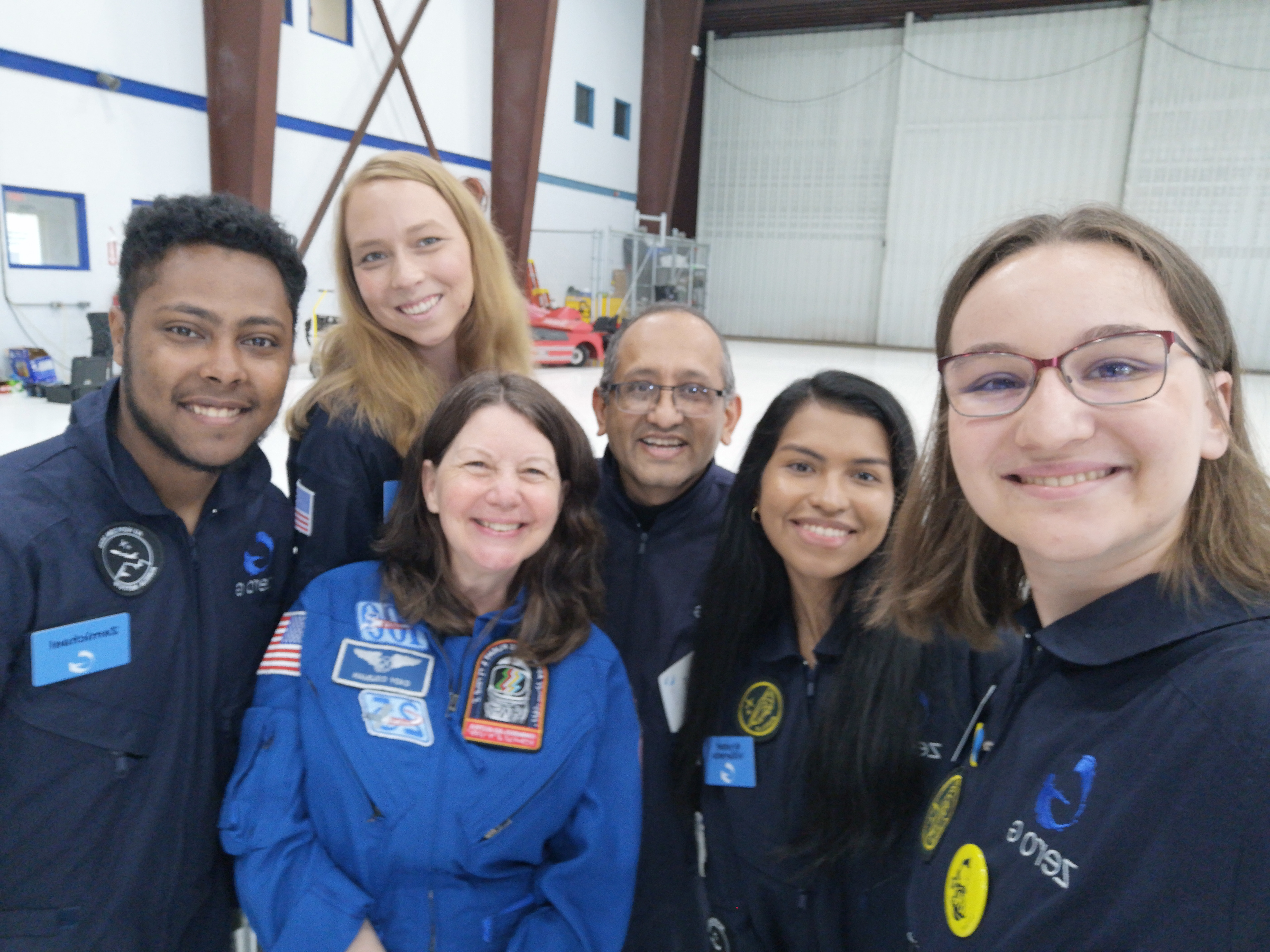
On the first day, we received our flight suits! I decorated it with a bunch of meaningful symbols to me:
Results
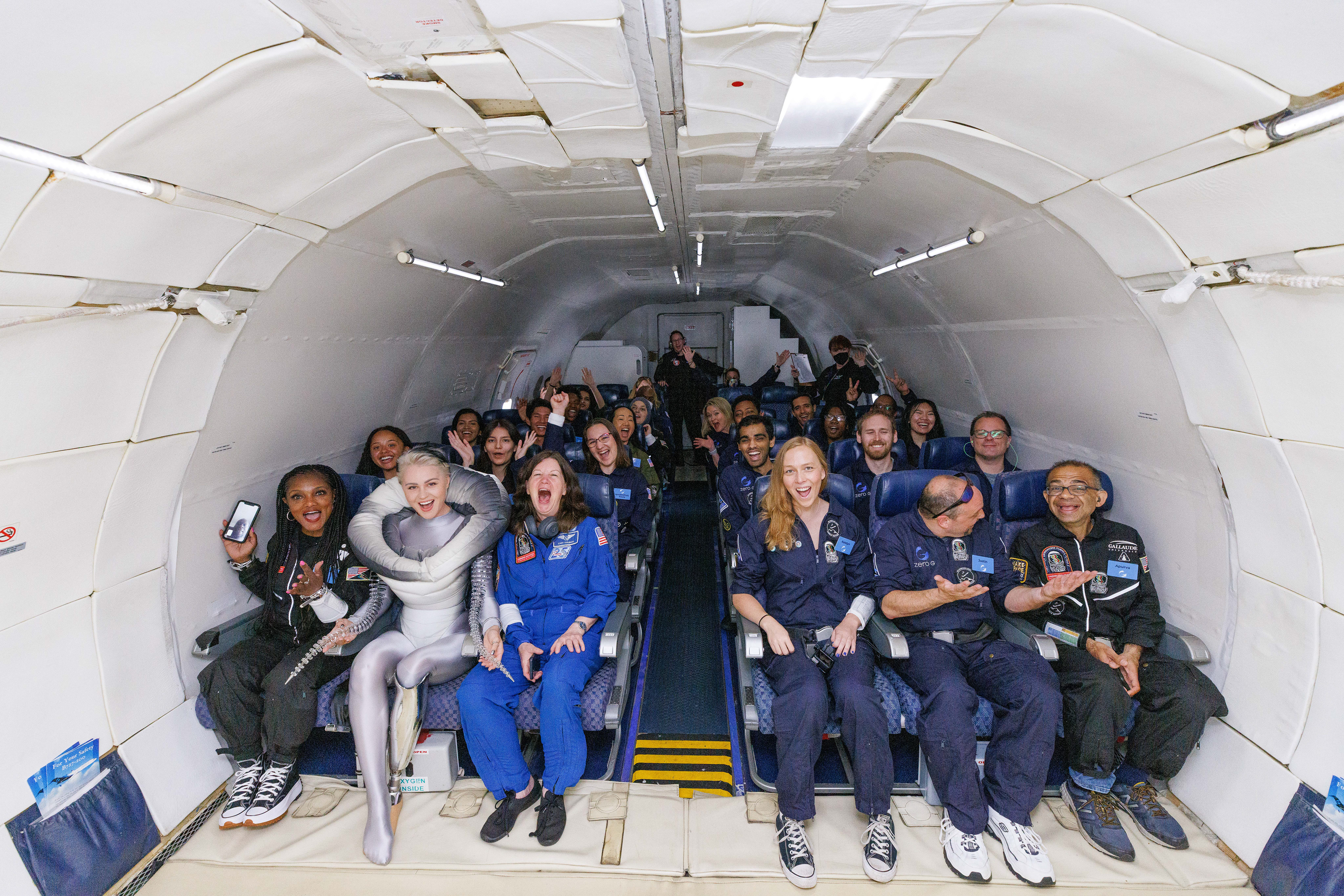
The whole crew, all smiles, sits at the back of the plane in seats for take-off. Credit Zero G Corp and Steve Boxall
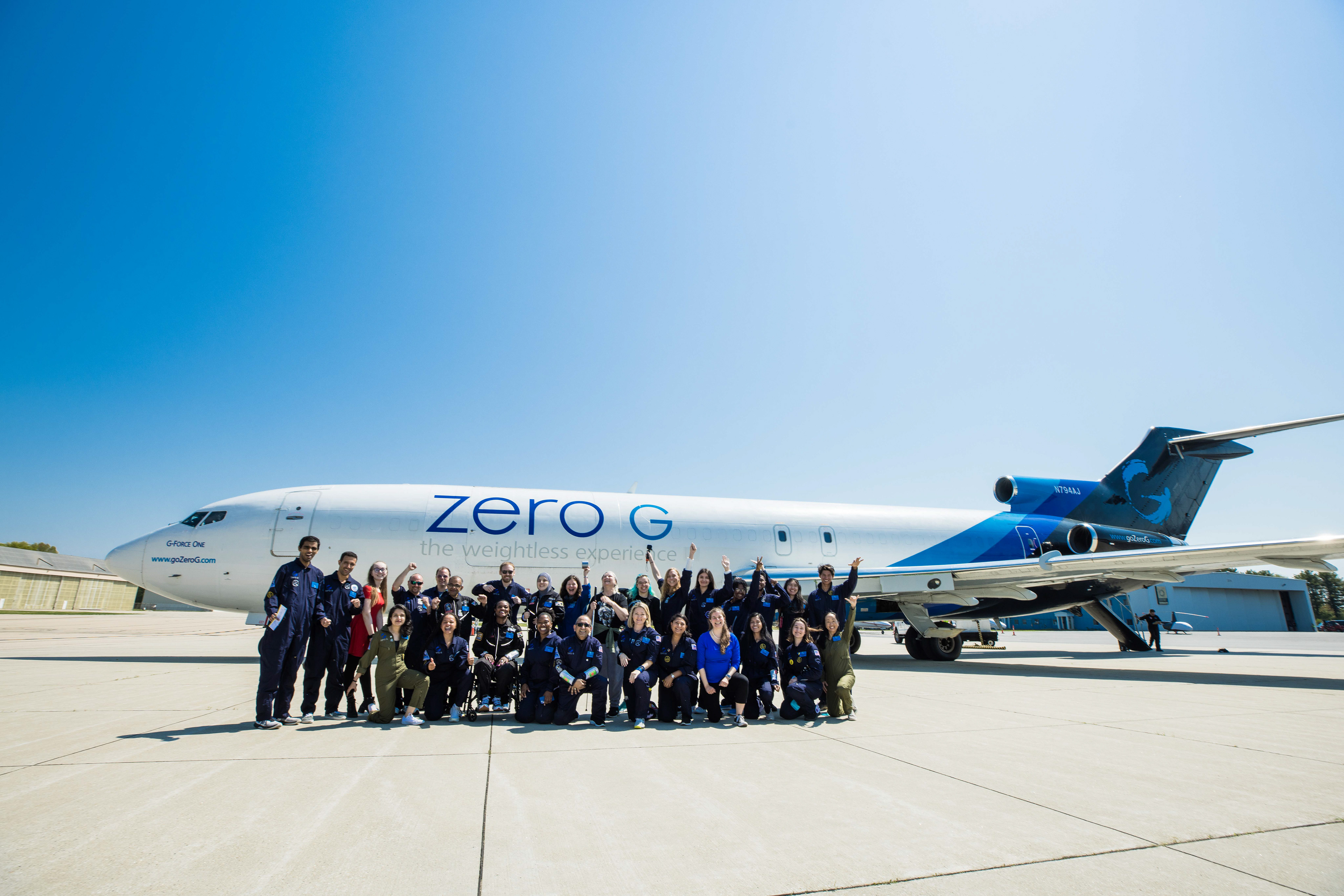
The whole crew poses in front of the large Boeing 747 plane. Credit Zero G Corp and Steve Boxall
The flight itself was transcendent! We had 20 parabolas total, beginning with 2 Martian and 2 Lunar
credit: ESA - https://www.esa.int/ESA_Multimedia/Images/2020/05/The_different_gravity_phases_during_a_parabola
The plane is on a parabolic flight trajectory. Imagine tossing two objects in front of you at the same time/same speed. They make a little arc together and hit the ground. Relative to each other the objects are basically floating still. That’s essentially what the pilots of our plane do, they fly up at an angle and then *effectively* cut off the engines for the plane to follow such a parabolic arc, with us humans inside floating relative to the cabin. From a physics perspective, no measurement device can differentiate this from floating in deep space. Coming up into (your body is pressed down into the cabin) and down out of (the plane is slowing down pressing your body down into the cabin) this parabola, the plane is accel/decelerating causing you to feel 2x the force of gravity, specifically 1.8 g between the zero-g moments.
I like to say it feels like you are an air balloon. Initially, I thought it might be more like a helium balloon, however, when you transition to zero-g, inertia dictates you stay on the ground unless you apply a force. A gentle push with your fingertips will send you floating “up”—an irrelevant term at that point—while an instinctive push-off with your legs will quickly crash you into the ceiling (something we are warned to avoid doing). For those beautiful 21 seconds, all of your body's 6 axes (rotation/translation) feel frictionless and unimpeded. But don’t be deceived, it still takes effort to push off the walls. Your mass/mass of other objects matters!
Zero-G flight highlights
The first zero-g moment was simply amazing, with a light push off the ground with my fingertips my body floated up, I was no longer bound by gravity!
So how did my projects fare?
Star Broom was a delight and made me feel like I had some kind of object to rely on and reference while I was in such a free-floating state. It felt comforting and fun to have it lift up with me as if it itself had the power of zero-g.
Orbi happily floated and spinned around.
PSSST™ failed very quickly as I found there was no way 2 spray bottles at 50 psi could move my body significantly to see over just 21 seconds (inertia exists!) By this time I was mostly expecting this--after having watched more videos from Zero-G Corp's orientation. Overall though, the form factor felt fun to hold and I also think it would be much easier to move a smaller kid with something like this anyway ;P I would love to improve on the concept in the future.
The experience was very meaningful to me, from decorating my flight suit with mementos, to experiencing something only astronauts could for many decades! I wanted to take some parabolas just to ~feel~ this feeling, even closing my eyes to notice my own center of mass. This experience would have to last a while as it informs future projects I want to design.
Additionally, A “zero-g” parabolic flight is the best analog to floating in deep space (in fact, it is exactly the same according to the Einstein Equivalence principle!) My animation from 2018 shows a longshot dream to float among the stars. It's wild that in 4 short years I was able to achieve a very close equivalent.
It's also significant at large that more people are getting to do this. Microgravity is already a treasure trove of innovation! Aerospace companies like Varda and Made In Space are taking advantage of microgravity for novel manufacturing techniques. For example, ZBLAN optical fiber made in zero-g has “minimal losses from scattering and microcrystal formation, increasing the fiber’s performance towards approaching its theoretical limitations.” (source)
Simply playing around in this proverbial sandbox can lead to discoveries. An astronaut on the ISS shook a bag of salt to discover it formed clumps akin to the formation of galaxies in our universe! From kid to grandparent, access to zero-g had endless possibilities. Where else can we say we have entirely new rules for existing?
Simply playing around in this proverbial sandbox can lead to discoveries. An astronaut on the ISS shook a bag of salt to discover it formed clumps akin to the formation of galaxies in our universe! From kid to grandparent, access to zero-g had endless possibilities. Where else can we say we have entirely new rules for existing?
Q&A
What is the Zed Factor Fellowship and your involvement there?
The aerospace industry has a vested interest in getting more STEAM students, particularly from gender, disability, racial, and other minority backgrounds involved. Astronaut Bernard Harris remarked recently that when the Baby Boomer generation retires, there still aren’t enough students to fill all the positions they would leave. At the same time, the commercial aerospace economy is now blossoming far beyond just the government and military of the Apollo era. We’re seeing not only an Earth-Space economy but the emerging Space-Space economy.
In this environment, leaders and young professionals have been coming together and creating Aerospace specific fellowships to help college students enter the industry. These include the Brooke Owens Fellowship, Matthew Isakowitz Fellowship, Patti Grace Smith Fellowship, and the newest one, Zed Factor Fellowship (if you are reading this--apply!). The Zed Factor Fellowship consists of pairing underrepresented (in all its definitions) students with internships, mentorships, a flagship leadership summit, and a year-long community service project. I was part of the inaugural cohort in 2021 and it was one of the most important springboards for my professional career. I got to dive headfirst into this industry through my internship and continuing co-op job at the Gas Stations In Space™ startup Orbit Fab, and soak up so much new knowledge in just 1 short year. It’s been a wonderful journey.
March 3rd, I got an email from Zed Factor that one of the 2021 Zedi’s would be chosen to participate in this flight. We had to submit 3 essays about why this would be meaningful to us, and how we would engage a community around our projects. I was accepted! and honored to represent so many amazing peers.
How do you think this experience will impact your goals as a student and in your professional pursuits moving forward?
It’s difficult for a rising sophomore to get an internship, it’s difficult for that internship to be in the space industry, and it’s almost unheard of for that space industry internship to be based around artistic and communication skills just as much as engineering. On top of it all, within just a year of being here-- to get a chance to go on a zero-g flight?!
Sometimes when a barrage of good things comes your way it’s easy to think of luck, but one of my mentors reframed that for me. At every step along the way I put in the hard work to be prepared, I’m always at the proverbial bus stop with my things packed when such opportunities come by, and this time in particular it was in great part thanks to 2 USC classes I was taking spring semester.
The first was Davina Wolter’s Designing Live Experiences class. Alexandra Abrams, Michelle Wang, and I were developing Orb: an Orbital Hotel Experience for the “entertainment venue 50 years from now” prompt. We interviewed Astronaut Garett Reisman, Zed peer mentor Vera Demchenko, (and various aerospace friends I happened to converse with during that time), and envisioned novel experiences such as a 360 Theatre, and satellite racing.
The second class was LA: A Polymathic Inquiry taught by Professor Huebner and Deverell. The class is uniquely structured to let you pursue your passion as a year-long research project (along with a curriculum and guests that help you learn the deep history and future of Los Angeles). My interest was in the creation of the aerospace industry and how Art & Technology Collaborations have proved to spur its innovation, resulting in the creation of space missions and artistic designs we see today. My project culminated in this website resource: https://scalar.usc.edu/works/art--engineering-in-the-space-industry/index
What’s super exciting is Fellowships like Zed Factor and non-profits like Aurelia are recognizing these challenges and making them far more accessible. Our Gateway 2022 program is meant to be just the beginning of getting more people able to go on zero-g research flights.
At USC IYA (an interdisciplinary/entrepreneurship-based major in "Arts, Technology, and the Business of Innovation") we are often told that our education is preparing us for job titles that don’t yet exist. I think at Orbit Fab, particularly as a startup environment, I’m beginning to see that paradigm shift. While my title is “Marketing Manager,” it’s not what that title traditionally meant 10 or even 5 years ago, I’m directly interfacing with engineers to communicate our architectural vision, or create 3D visualizations for future missions and proposals, or use infographics to explain our carbon emission savings to investors... Plus, my minor in Astronautical Engineering (specifically taking ASTE 280) helps me be on a more equal playing field when discussing concepts like orbital dynamics.
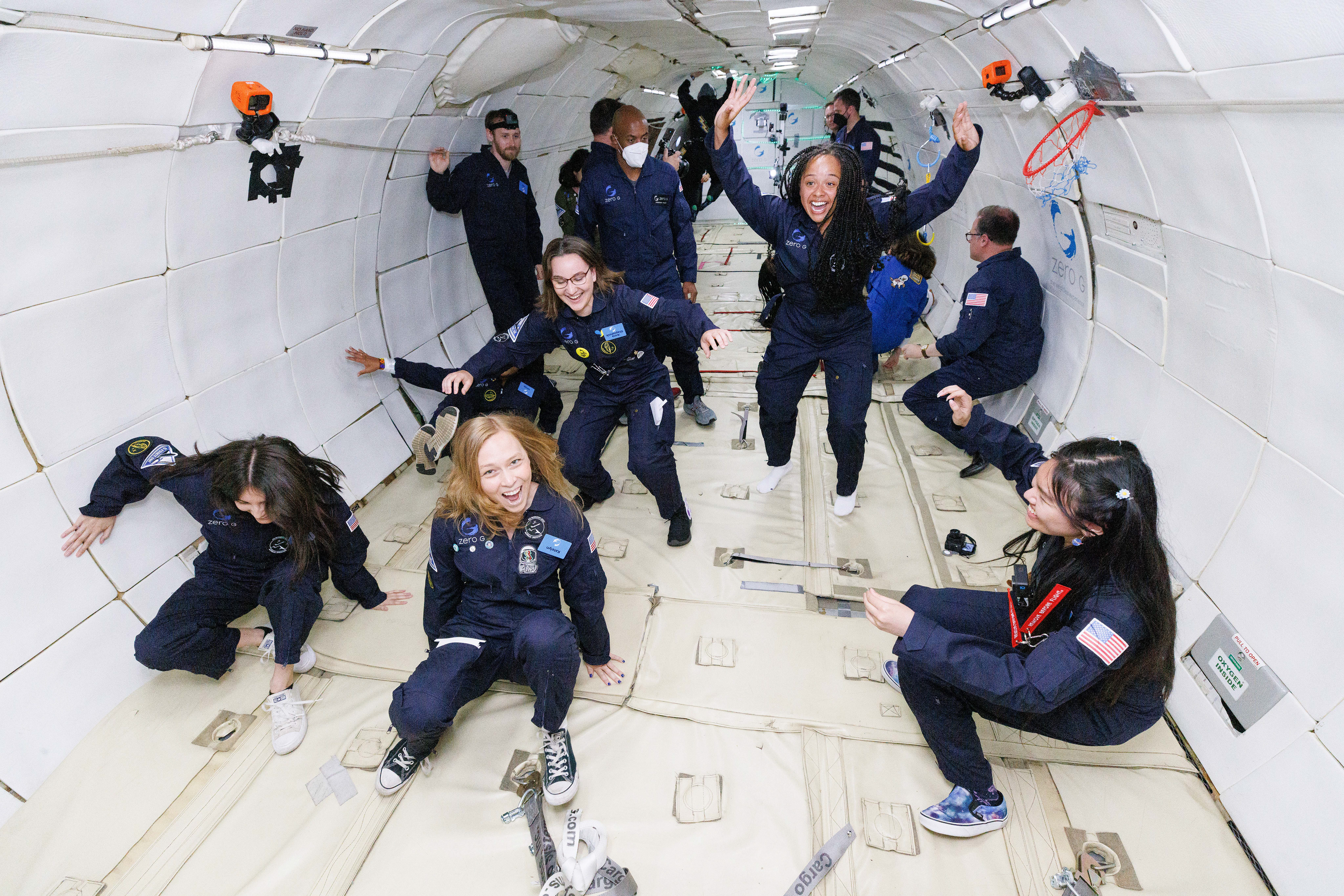
Image of people on the flight experiencing lunar gravity. Credit: Zero G Corp and Steve Boxall

Superhero pose of the AstroAcess ambassadors in zero g. Credit: Zero G Corp and Steve Boxall
What did you learn from others involved and what wisdom did you take away from the experience?
The best part of the whole experience was the people I met and range of ideas being explored. It gives me so much hope and excitement for more people to come and try this out. Aurelia published an article summarizing everyone’s involvement here.
Fresh in my mind are Nālamakū Ahsing and Dr. Linda Furuto from the Polynesian Voyaging society who brought a vile of water from “Ka Piko O Wākea, the navel of Wākea Sky Father also known as the equator” collected during one of their voyages. Speaking to them, something that stuck with me was the Hawai’i saying “He waʻa he honua -- The Earth is our canoe”. It resonates with me how we are all part of one ecosystem, the Earth, and cannot hide from the climate destruction we are bringing our home.
Dr. Linda Fruto also taught me the amazing concept of ethnomathematics, which she pioneers as a professor at University of Hawai‘i at Mānoa (UHM). "Ethnomathematics, simply put, is applied math taught through a cultural lens."
(Read more on their story at https://www.aureliainstitute.org/posts/horizon-2022-flight and https://www.hokulea.com/)
Fresh in my mind are Nālamakū Ahsing and Dr. Linda Furuto from the Polynesian Voyaging society who brought a vile of water from “Ka Piko O Wākea, the navel of Wākea Sky Father also known as the equator” collected during one of their voyages. Speaking to them, something that stuck with me was the Hawai’i saying “He waʻa he honua -- The Earth is our canoe”. It resonates with me how we are all part of one ecosystem, the Earth, and cannot hide from the climate destruction we are bringing our home.
Dr. Linda Fruto also taught me the amazing concept of ethnomathematics, which she pioneers as a professor at University of Hawai‘i at Mānoa (UHM). "Ethnomathematics, simply put, is applied math taught through a cultural lens."
(Read more on their story at https://www.aureliainstitute.org/posts/horizon-2022-flight and https://www.hokulea.com/)
I initially expected people to come with a lot of traditional research projects, but as we had more and more zoom meetings to prepare it was clear the mission of the flight was storytelling and inclusion.
Another amazing group on the flight was AstroAccess. I got to speak to blind ambassador Mona Minkara and learn about her project to have large fabrics on the sides of the plane that had fabric patterns spaced at differing intervals to let her know via touch her orientation in the plane.
I learned how disabled astronauts are an asset to space exploration missions, as they are uniquely suited to navigate situations like having the lights go out, or using sign language to speak across large distances/in the silent vacuum of space.
I spoke to Anna Volker (they/them) and Caitlin O'Brien (she/her) and they told me: “Accessibility is important not because it’s nice but because it’s necessary. In STEM, just as we’ve included People of Color and women, as we move forward, we need to include people with disabilities. In space, we’re going to have disabled astronauts whether we prepare for it or not.
“It’s not a risk, it’s a form of risk mitigation. Accessibility benefits EVERYONE. Something we like to say at AstroAcess is if we make space accessible, we can make any space accessible. It’s going to affect the lives of people here on earth today.”
What would I improve/do next time?
I would love to improve PSSST and understand better what it would take to actually propel someone from point A to point B. I also heard/saw some cool ideas afterward of spinning with outstretched hands and bringing my hands in, or trying more gymnastic movements like holding my feet behind my head and spinning, etc.
What's next for you and what are the next steps pertaining to this project?
I will be publishing a vlog (stay tuned!) that details the 3 days we were in Boston for the flight as well as a video on the process I took to make my items. I had just a week to build them all in the midst of moving back home after USC’s final projects/exams. Just as I would do at IYA, my prototyping skills kicked in, and working till the final minutes before I left for my flight, I was able to finish them all. However, these items are just the beginning. I’m serious about continuing to explore product design for zero-g particularly in merging art and technology. The projects were just a capstone to my large body of research which I hope to continue on my website here: https://scalar.usc.edu/works/art--engineering-in-the-space-industry/index
Furthermore, I’ve been talking to faculty from both IYA and Viterbi (and hope to include more), along with my association as Co-President of Students for the Exploration and Development of Space to create a cross-disciplinary workshop to explore space infrastructure and entertainment ideas. Being at a university, it would be wasteful not to make use of the
close-knit community of different disciplines and bring them together all in one place. If you’re reading this and would like to help email me at shaposhn@usc.edu! I'm also open on Linked In or Instagram to answer any questions whenever :)
Ad Astra!
close-knit community of different disciplines and bring them together all in one place. If you’re reading this and would like to help email me at shaposhn@usc.edu! I'm also open on Linked In or Instagram to answer any questions whenever :)
Ad Astra!